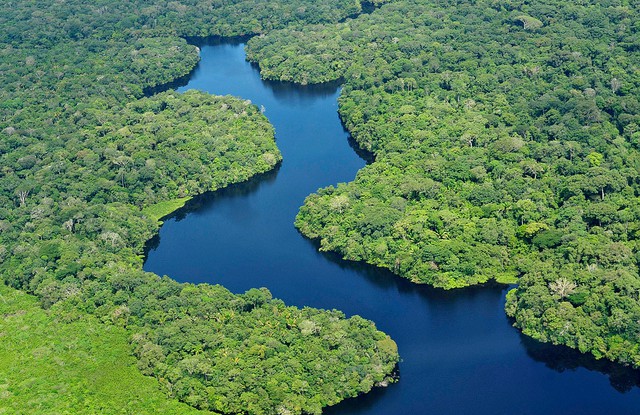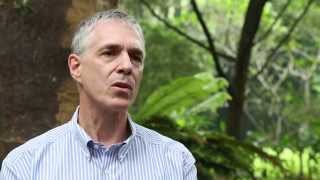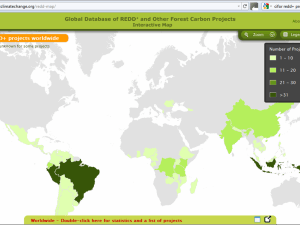
BOGOR, Indonesia — Actions must be taken to clarify land tenure in forest-rich developing countries, and to improve the economic viability of REDD+ or risk jeopardizing efforts to reduce deforestation and mitigate climate change, a new study based on 23 forest carbon initiatives suggests.
Hundreds of pilot initiatives designed to test the feasibility of REDD+, or Reducing Emissions from Deforestation and forest Degradation, have got under way in recent years. But with obstacles mounting and a climate agreement still elusive, some initiative proponents are losing their enthusiasm for REDD+, according to the study, led by the Center for International Forestry Research (CIFOR).
“The initiative proponents are a spirited, determined group of people who believe in what they’re doing to protect forests,” said William Sunderlin, principal scientist at CIFOR and lead author of The Challenge of Establishing REDD+ on the Ground: Insights from 23 Subnational Initiatives in Six Countries.
“But they’re encountering major challenges whose root causes lie outside their project boundaries, particularly tenure insecurity and what we call the ‘disadvantageous economics’ of REDD+,” Sunderlin said. “These subnational initiatives need more committed support from national and international processes to create circumstances that allow REDD+ to function as intended.”
REDD+ emerged in 2007 as a promising mechanism to slow anthropogenic climate change by providing financial incentives to keep forests standing, given that forests absorb carbon from the atmosphere and that deforestation and forest degradation contribute up to 15 percent of global greenhouse gas emissions. For example, in Indonesia, the world’s third largest emitter of greenhouse gases, more than 75 percent of emissions come from conversion of forests to farmland, agriculture and peat fires — roughly equivalent to emissions from about 400 million cars each year.
What makes REDD+ different from previous — and generally unsuccessful — efforts to reduce deforestation is that it is based on performance-based incentives. As originally conceived, REDD+ would generate a revenue stream by placing a financial value on carbon, with forest managers receiving a share of that revenue only if they actually achieved emission reductions or enhanced carbon stocks.
“Conditional incentives give REDD+ an extra point of leverage, but for this system to work, there must be a clear stream of income and it must be clear who is entitled to benefit,” Sunderlin said.
“Our study shows that these aspects in particular are weak, and this is where attention needs to be focused.”
A CONTESTED LANDSCAPE
Insecurity over tenure — the right to own, access or use land — remains the biggest challenge for proponents, the study found.
“REDD+ is being established in places where tenure rules are often unclear and contested,” Sunderlin said.
“But the REDD+ rewards system requires clarity over who holds the right to forests or carbon, who is responsible for reducing emissions, and who can claim the benefits.”
In an earlier survey of villages in five countries involved in REDD+, more than half of the respondents reported that at least some of their tenure is insecure, and more than a fifth had been unable to exclude unwanted outsiders. Furthermore, as tenure problems are generally national in scope and origin, resolving them often lies outside proponents’ control.
There is growing awareness among governments that tenure problems and the economics of REDD+ are fundamental and need to be resolved soon
The challenge, while daunting, is not insurmountable, Sunderlin notes, as path-breaking tenure reforms are beginning to take shape.
In Indonesia, for example, the government has launched the One Map Initiative to improve tenure and land-use planning, and last year a Constitutional Court ruling aimed to grant indigenous people land ownership rights.
THE HIGHEST BIDDER
Yet for anyone to benefit, REDD+ must generate income in the first place, and the REDD+ revenue stream originally envisioned through trading carbon credits on carbon markets has fallen short of targets.
Undermining efforts to generate revenue are the lack of a binding international climate agreement to induce regulatory changes, weak carbon markets and the ongoing dominance of powerful business interests, according to the study.
“If you think of REDD+ as a bidding process in an auction, where those who make the highest bid can control forest land use, the bid offered by big agricultural companies often outcompetes what can be offered by REDD+,” Sunderlin said.
“This could change with the establishment of new conditions — some combination of development assistance, international or national funds, or a market-based mechanism — that can generate a stream of income from REDD+ and cover the opportunity costs of forest conversion.”
The existing funding gap is estimated at US$15 billion to US$48 billion by 2020, with the supply of carbon credits outstripping demand by 13 to 39 times, according to the International Forest Finance Project. Initiatives such as California’s cap-and-trade program show promise for generating revenue through carbon markets, but, Sunderlin said, “there is still an urgent need for something that does not yet exist.”
Nevertheless, in combination with research turning a spotlight on challenges and possible solutions, the positive developments under way and increasing impetus to act can lead to “breakthrough solutions,” he added.
“There is growing awareness among governments that tenure problems and the economics of REDD+ are fundamental and need to be resolved soon,” Sunderlin said.
“You can’t rule out the possibility of dramatic improvement in climate change mitigation policy in the next few years — simply because world leaders cannot afford to ignore climate change anymore.”
For more information about the topics of this research, please contact William Sunderlin at w.sunderlin@cgiar.org.
This research was carried out as part of the Global Comparative Study on REDD+ and the CGIAR Research Program on Forests, Trees and Agroforestry and was supported in part by NORAD, AusAID, DFID, the European Commission, the Department for International Development Cooperation of Finland, and the David and Lucille Packard Foundation.
We want you to share Forests News content, which is licensed under Creative Commons Attribution-NonCommercial-ShareAlike 4.0 International (CC BY-NC-SA 4.0). This means you are free to redistribute our material for non-commercial purposes. All we ask is that you give Forests News appropriate credit and link to the original Forests News content, indicate if changes were made, and distribute your contributions under the same Creative Commons license. You must notify Forests News if you repost, reprint or reuse our materials by contacting forestsnews@cifor-icraf.org.

